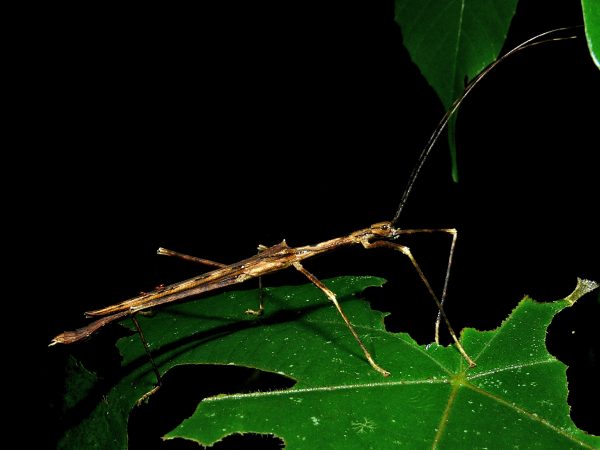Among all the insects, Stick Insects are very popular pets nowadays. People like to keep them as pets because of their unique and amazing appearance. They are also relatively easy to keep when compared with other insect pets. However, utmost care is very necessary to keep these delicate creatures alive and healthy. If you intend to keep them as pets then you need to know “What Do Stick Insects Eat” and what list of things are part of Stick Insects Diet. We have gathered complete list of plants that are part of the stick insects diet.
What Do Stick Insects Eat
- Stick Insects are herbivores i.e. they eat plants.
- Their main diet consists of leaves, shrubs and any visible attractive part of plant.
- Stick insects like to eat leaves, but they do not eat leaves of every type of plants.
- Every specie of Stick Insects has one or more specific plants which they like to eat.
- Unlike other insects, Stick insects and caterpillars eat their own specific food plants only.
- Stick insects are very smart and do not eat plants that are toxic to them.
- Bramble/blackberry leaves are eaten by almost all species of stick insects.
- The Australian or Giant Spiny stick insect (Extatosoma tiaratum) and Indian or Laboratory stick insect (Carausius morosus) likes to eat:
- Oak
- Hawthorn
- The Peruvian Fern Stick insect (Oreophoetes peruana), likes to eat bracken and other ferns.

What can Stick Insects Eat – What Leaves do Stick Insects Eat
The most common plants that are eaten by most of the species of stick insects inlcude:
-
Bramble
- It is an excellent source of food for stick insects and is eaten by many species of stick insects.
- Bramble is an evergreen plant i.e. it stays green even in winter.
- Fresh brightly colored leaves of Bramble can be harmful to stick insects but the dark colored long leaves are good for them.

-
Oak
- Oak is also eaten by most of the stick insects and leaf insects.
- Oak is not an evergreen plant so it is not available in winter.

-
Hazel
- Hazel like oak is not an evergreen plant but it is also eaten by most of the species of stick insects.

-
Privet
- Privet is food source for few stick insects like Peruphasma schultei and is the primary source of food for caterpillars.

-
Rose
- Many stick insects like to eat rose leaves especially those species which like to eat bramble.

-
Ivy
- Ivy is an evergreen plant that is an exclusive food source for some species of stick insects.

-
Eucalyptus
- Eucalyptus (Gum) leaves are eaten by almost all the species of stick insects that are kept as pets.

Do Stick Insects Eat Each Other
- No, stick insects do not eat each other because they are herbivores.
- Herbivores insects are those insects which only eat plants.
What Do Indian Stick Insects Eat
- Indian stick insects eat the following plants:
- Bramble
- Privet
- Hawthorn
- Rose
What do Walking Stick Insects Eat
- Adult walking Stick Insects like to eat oak leaves while the Nymphs (baby walking stick insects) eat oak leaves along with various other plants, berries and shrubs found near the oaks.
- They also known to feed on fabric textiles.
What Do Baby Stick Insects Eat
- Baby stick insects eat leaves of plants eaten by the adult stick insects of the same specie. They start eating leaves as soon as they are hatched.
How do Stick Insects Eat
Stick Insects Diet Habits
- Stick Insects are classified as the top order light-gap herbivores for climax forests, where they control net production of early successional plants. This ensures efficient recycling of the tropical forest.
- They destroy forest and shade trees by defoliation.
Feeding Stick Insects
- Stick insects only feed on fresh leaves so always provide them with fresh leaves.
- In order to keep the leave fresh keep the branch in a vase of water.
- Replace the leaves when they are dried or the branches when the leaves are eaten.
- Do not leave your stick insects without leaves.
- Make sure that the leaves are free from pesticides and herbicides.
- Avoid bright colored young leaves as they have higher levels of eucalyptus oil which is harmful for the stick insects.
- Spray water regularly on the leaves as stick insects drink their water from the leaves.







Leave a Reply